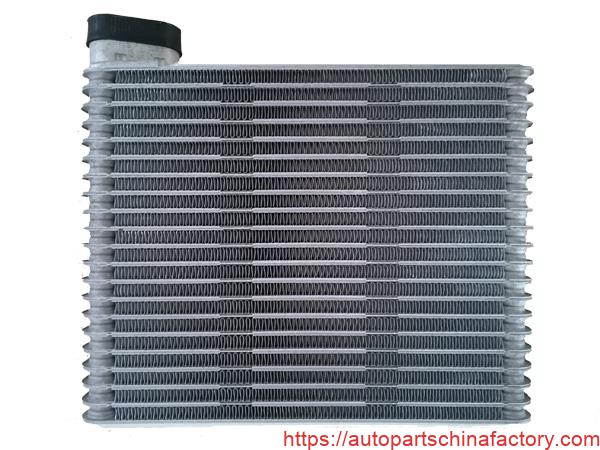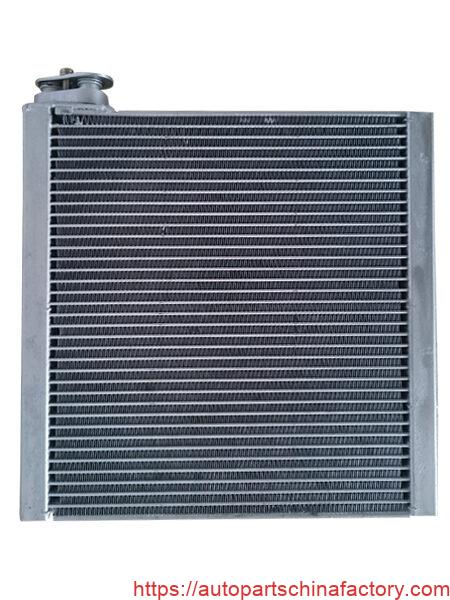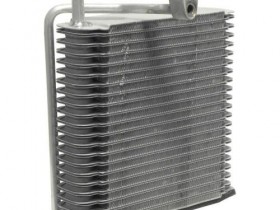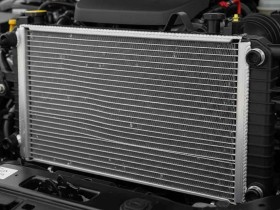- A+
The key differences between stacked evaporators and manifold evaporators in car air conditioning systems lie in their structural design, 냉매 흐름, 결과적으로 성능 특성.
쌓인 증발기

Structural Characteristics:
- A stacked evaporator typically consists of multiple flat, 층 열 교환 통로 (또는 1 차 방열판).
- Heat exchange fins are placed between adjacent layers to increase the heat transfer surface area.
- 냉매는이 쌓인 통로를 통해 직렬 또는 병렬로 흐릅니다., 포트로 연결되었습니다.
- 흐름 등화 구멍과 같은 내부 구조, 흐름 제한자 핀, 또는 냉매 분포를 보장하기 위해 내부 지느러미가있을 수 있습니다..
작업 원칙: The refrigerant (usually in liquid form) enters the evaporator through an inlet pipe. It flows through the stacked passages, absorbing heat from the air passing over the evaporator. As the refrigerant absorbs heat, it vaporizes, becoming a low-pressure, low-temperature gas, which then exits the evaporator through an outlet pipe. The internal design (e.g., equalization holes) helps distribute the refrigerant evenly across all passages, improving heat exchange efficiency.
Advantages:
- Compact Structure: Due to its layered design, it occupies less space for a given heat exchange area.
- High Heat Exchange Efficiency: Carefully designed passages and fins effectively increase the heat transfer area, boosting efficiency.
- Even Refrigerant Distribution: Internal flow equalization structures help ensure uniform refrigerant flow, preventing localized overcooling or overheating.
Disadvantages:
- Relatively Complex Manufacturing Process: Stacking and sealing multiple flow passages requires high manufacturing precision.
- Potentially Difficult to Maintain: If internal blockages or leaks occur, repairs might be more challenging than with other types.
매니 폴드 증발기

Structural Characteristics:
- A manifold evaporator typically includes an inlet manifold and an outlet manifold, connected by multiple parallel flat tubes.
- These flat tubes are often connected by fins to increase the heat transfer surface area.
- Refrigerant enters from the inlet manifold and flows in parallel through multiple flat tubes to the outlet manifold.
- To ensure even distribution of refrigerant across the flat tubes, the inlet manifold might also contain a flow distribution plate or holes.
작업 원칙: High-pressure, ambient-temperature liquid refrigerant, after being depressurized by an expansion valve, enters the inlet manifold. It's then distributed into multiple parallel flat tubes. The refrigerant evaporates (vaporizes) within these flat tubes, absorbing heat from the surrounding air and thus cooling the air. The vaporized, low-pressure, low-temperature gaseous refrigerant collects in the outlet manifold and is then drawn into the compressor.
Advantages:
- Relatively Simple Structure: Compared to stacked evaporators, the connection of manifolds and flat tubes can be easier to manufacture.
- Lower Pressure Drop: The parallel flow path design generally leads to lower pressure loss for the refrigerant.
- Relatively Easier to Repair: In some cases, damaged flat tubes might be easier to identify and repair.
Disadvantages:
- Refrigerant Distribution Uniformity Can Be Affected: If the manifold design is poor, it can lead to uneven refrigerant flow in different flat tubes, impacting heat exchange efficiency.
- May Occupy More Space: To achieve the same cooling capacity, it might require a larger volume.
Summary of Differences
| Feature | 쌓인 증발기 | 매니 폴드 증발기 |
| Refrigerant Flow | Typically flows in series or parallel through multiple layered passages | Refrigerant distributed by manifolds into multiple parallel flat tubes |
| Structure Type | Composed of layered heat exchange passages and fins | Composed of inlet/outlet manifolds, multiple flat tubes, and fins |
| Space Occupancy | Relatively compact, high volumetric efficiency | May occupy more space |
| Refrigerant Distribution | Internal flow equalization designs aid even distribution | Manifold design significantly impacts even distribution |
| Manufacturing Process | Relatively complex, high sealing requirements | Relatively simpler |
| Typical Application | Common in car A/C systems where space and efficiency are critical | Widely used in various air conditioning and refrigeration systems |




